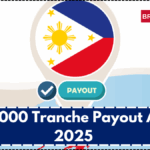As August 2025 unfolds, a major shift is underway in the Philippine transportation landscape. The long-debated PUV jeepney phase-out has reached a pivotal moment, with a final deadline officially announced. The government’s initiative, part of a broader modernization effort, aims to replace old, traditional jeepneys with environment-friendly, standardized units under updated PH transport rules.
For thousands of drivers, operators, and commuters across the country, this development represents both a significant challenge and a possible path to progress. Let’s explore what the deadline means, how it impacts drivers, and what support is available.

What is the PUV Jeepney Phase-Out?
The PUV jeepney phase-out is a national government program under the Public Utility Vehicle Modernization Program (PUVMP) that seeks to retire aging jeepneys that do not meet the latest safety and environmental standards. Vehicles that are 15 years or older are being decommissioned and must be replaced by modern, euro-4 compliant jeepneys or electric PUVs.
This move aligns with new PH transport rules, aiming to reduce pollution, improve commuter safety, and streamline urban mobility in Metro Manila and across the provinces.
Official Deadline Announced – August 31, 2025
After several delays and nationwide consultations, the Department of Transportation (DOTr) and the Land Transportation Franchising and Regulatory Board (LTFRB) have officially confirmed August 31, 2025, as the final deadline for the PUV jeepney phase-out.
Operators who fail to modernize or consolidate into cooperatives or corporations by this date may no longer be allowed to operate. This announcement is a major turning point for the public transport industry in the Philippines.
How This Affects Jeepney Drivers and Operators
The effect of the PUV jeepney phase-out is being felt across the board, especially among small-time operators and drivers. Here’s a breakdown of the changes:
-
Franchise Consolidation: Drivers must join cooperatives to be eligible for the new modern PUV routes.
-
Vehicle Financing: Government programs like the Landbank PUV financing scheme offer financial assistance to help acquire modern jeepneys.
-
Loss of Income Risk: Drivers not compliant by the deadline may be forced off the roads, affecting daily income.
The phase-out not only affects the livelihood of drivers but also reshapes traditional transportation routes under PH transport rules.
Financial Support and Transition Options
To assist jeepney operators in transitioning smoothly, the government has rolled out various support schemes. The following table outlines key support available:
| Support Program | Details |
|---|---|
| Landbank Modernization Loan | Up to ₱1.2 million financing per unit, low interest, long repayment period |
| DOTr Scrappage Incentive | Cash incentives for turning in old jeepneys |
| Driver Re-Training Program | Training on handling new PUVs, route navigation, and customer service |
| Cooperative Formation Grant | Technical support for drivers forming cooperatives |
This support aims to cushion the impact of the PUV jeepney phase-out and make modernization more inclusive for all stakeholders.
Public Sentiment and Labor Groups’ Response
Despite the government’s push, several labor and transport groups have expressed strong opposition. They argue that the costs of modernization are too high for small operators and that many may lose their livelihoods. Protests and petitions have been organized, calling for more subsidies and flexible implementation of the PH transport rules.
However, the government has reiterated that the August 2025 deadline is final, emphasizing that the program has been in place since 2017 and that further delays would compromise public safety and air quality.
Commuter Impact: What Riders Should Expect
For daily commuters, the PUV jeepney phase-out may lead to:
-
Temporary route disruptions as old jeepneys are retired and new ones come online.
-
Fare adjustments due to increased operating costs of modern units.
-
Improved ride comfort, accessibility features, and safer vehicles under PH transport rules.
Riders are encouraged to stay updated through local transport advisories and support drivers during the transition.
Conclusion
The PUV jeepney phase-out marks a historic transformation in Philippine public transportation. While challenges remain—especially for drivers and small operators—the long-term goal of cleaner, safer, and more efficient transport remains at the forefront of this effort.
With August 31, 2025, as the final cut-off, now is the time for all stakeholders to act, adapt, and prepare for the new age of Philippine commuting under reformed PH transport rules.
FAQs
What is the exact deadline for the PUV jeepney phase-out?
The official deadline is August 31, 2025, after which non-compliant jeepneys may be barred from operating.
What support is available to help drivers modernize their jeepneys?
Programs like the Landbank PUV financing loan, scrappage incentives, and re-training courses are available for eligible drivers and cooperatives.
Can drivers still operate without joining a cooperative?
No, under the current PH transport rules, drivers must consolidate into cooperatives or corporations to continue operating legally.
Will fares increase after the phase-out?
Fare adjustments may occur due to the operational costs of new vehicles, but any fare hikes will still need LTFRB approval.
Are electric jeepneys part of the modernization program?
Yes, electric jeepneys are encouraged under the program as part of the government’s push for eco-friendly transport solutions.
Click here to learn more



